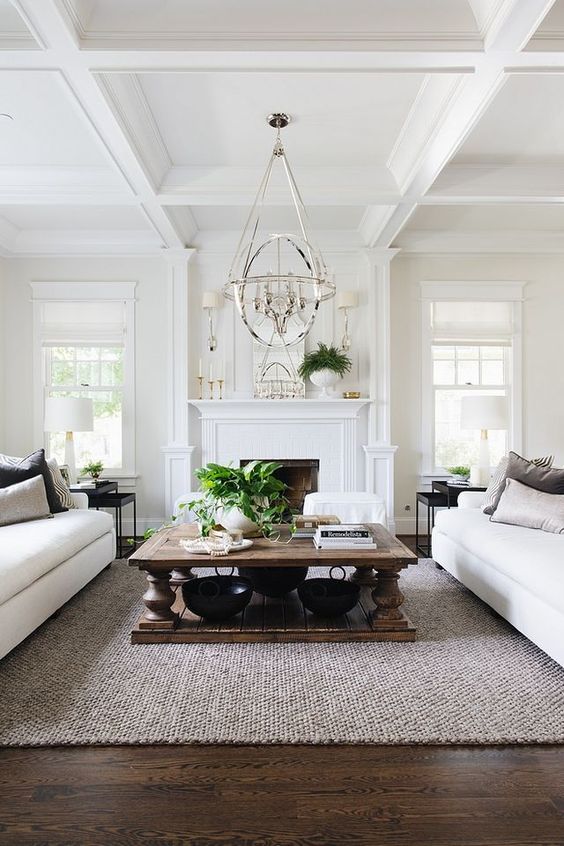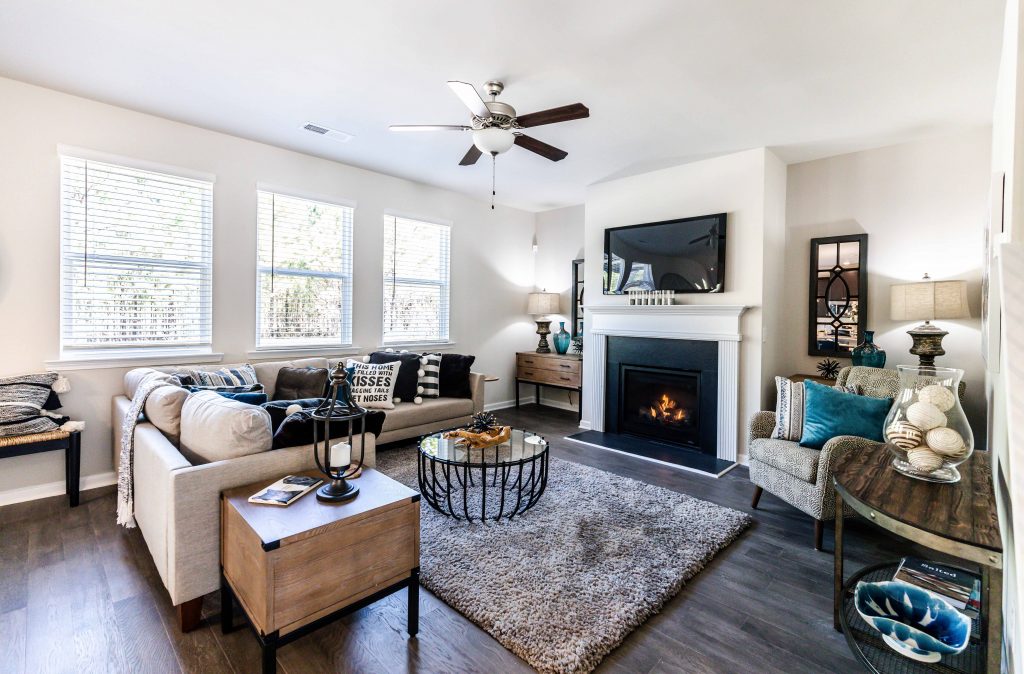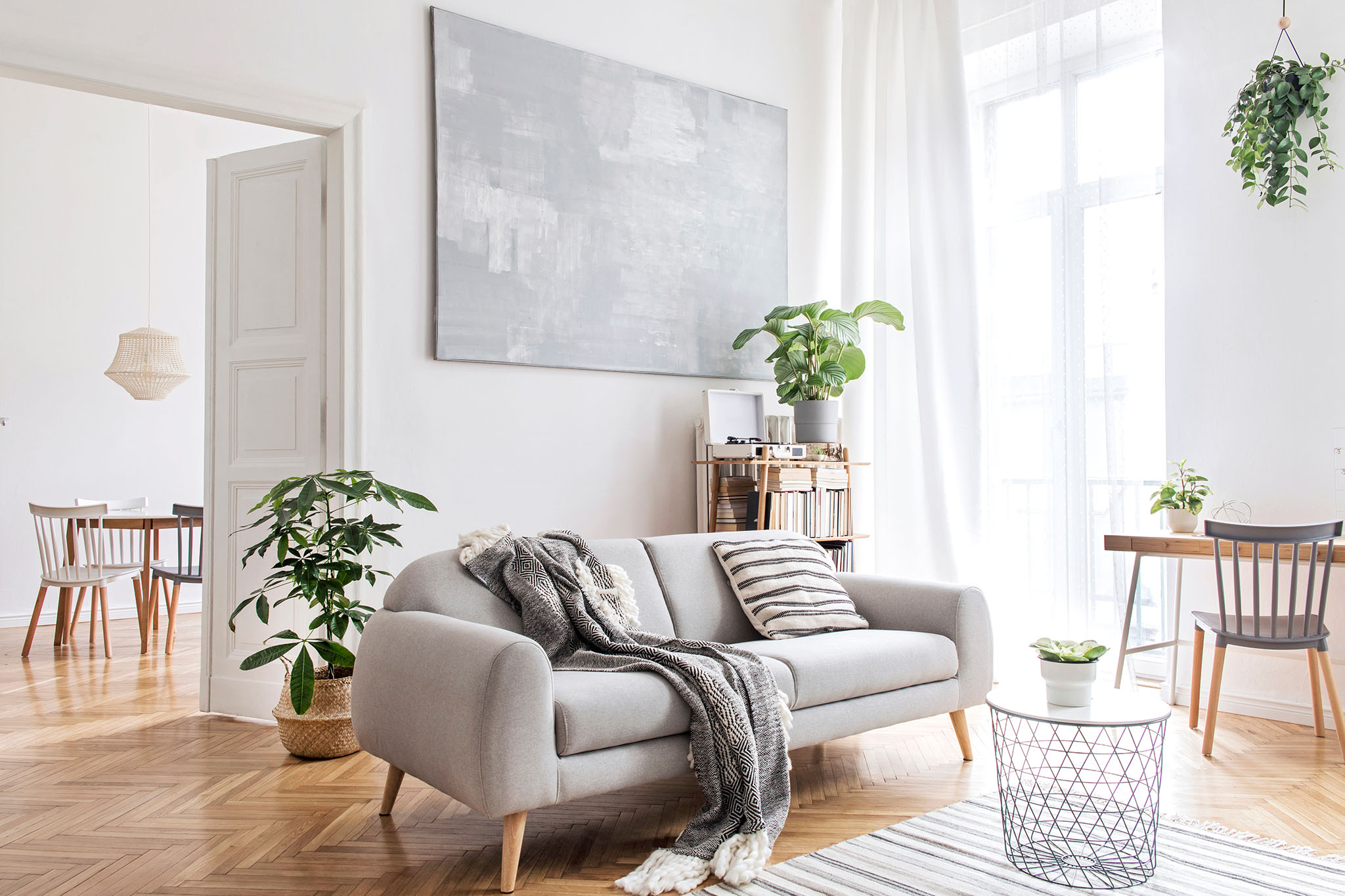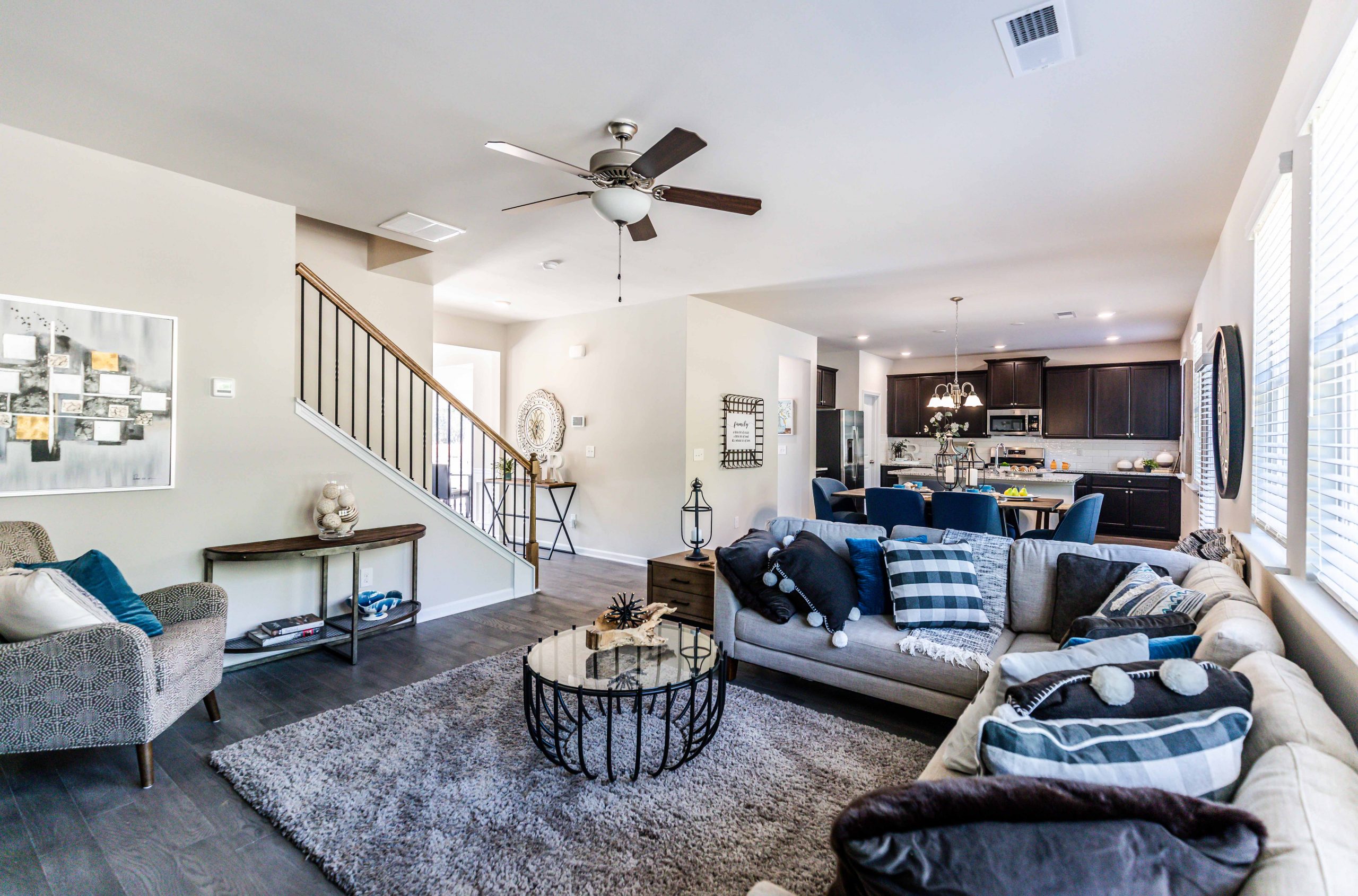1. No Formal Living Room Ideas
For some homeowners, the idea of a formal living room may seem outdated and unnecessary. After all, with the rise of open floor plans and multi-functional spaces, having a designated room solely for entertaining guests may not make sense for everyone. If you find yourself in this camp, don't fret - there are plenty of creative and stylish ways to utilize the space that would have been a formal living room.
One idea is to turn the room into a cozy reading nook, complete with bookshelves, a comfortable chair or two, and plenty of natural light. This creates a quiet and relaxing space for you to unwind and escape into a good book.
Alternatively, you could use the room as a home office, especially if you work remotely or enjoy hobbies that require a dedicated workspace. This allows you to keep your work and personal life separate, while still having a designated area to focus and be productive.
2. How to Design a Home Without a Formal Living Room
If you're building a new home or renovating an existing one, designing without a formal living room may require some strategic planning. First, consider the layout of your home and how you want to use the space. Are there other areas, such as a family room or dining room, that can serve as a gathering space for guests?
If so, you can repurpose the formal living room area for something more practical. For example, you could extend your kitchen or create a larger dining area. You could also incorporate a home office or playroom for kids, depending on your needs and preferences.
Another option is to create an open and airy feel by removing walls and combining the formal living room with other spaces. This allows for more natural light to flow throughout the home and can make the space feel larger and more inviting. Just be sure to consult with a professional before making any structural changes.
3. Creating a Cozy Space Without a Formal Living Room
One of the main benefits of not having a formal living room is the opportunity to create a more intimate and cozy space. You can achieve this by incorporating comfortable seating, soft lighting, and warm textures. Consider adding a plush rug, throw blankets, and pillows to make the room feel inviting and comfortable.
You can also use this space to showcase your personal style and interests. Hang up artwork or display collections to add personality and warmth to the room. Don't be afraid to mix and match different styles and textures to create a unique and eclectic look.
Additionally, using warm colors, such as shades of beige, cream, and brown, can help make the space feel cozier and more inviting. Just be sure to balance it out with pops of color and patterns to avoid a monochromatic look.
4. Alternative Uses for a Formal Living Room
If you're not quite ready to commit to turning your formal living room into a permanent space, there are alternative uses that can still make the room functional and practical. For example, you could use the room as a guest bedroom for when friends or family come to stay.
You could also use the space as a home gym, yoga studio, or meditation room. This allows you to have a designated area for self-care and wellness activities, without taking away from the rest of your home's functionality.
Another idea is to turn the room into a game room or home theater. This is a great way to use the space for entertainment purposes without having a formal living room that may not get much use.
5. Transforming Your Formal Living Room into a Functional Space
If you do decide to repurpose your formal living room, there are a few key elements to consider to make the space more functional. First, make sure there is ample seating for guests. This could include a comfortable couch, chairs, and even floor cushions for a more casual vibe.
Next, consider the lighting in the room. Natural light is always ideal, but if your formal living room doesn't have many windows, incorporate plenty of lamps and overhead lighting to create a warm and inviting atmosphere.
Lastly, don't be afraid to get creative with the layout and design of the room. For example, you could add a bar cart or a small coffee table for drinks and snacks, or incorporate a bookshelf or storage unit to keep the space organized and clutter-free.
6. Making the Most of a Home Without a Formal Living Room
Living in a home without a formal living room may feel limiting at first, but it can also be an opportunity to think outside the box and make the most of your space. Instead of focusing on what the home doesn't have, focus on what it does have and find ways to maximize its potential.
This could mean utilizing multi-functional furniture, such as a coffee table with hidden storage or a couch that can also serve as a guest bed. You could also get creative with wall space and add shelves or hooks for additional storage and decor.
Remember, a home without a formal living room can still be just as stylish and functional as one with it - it just takes a little creativity and ingenuity.
7. Decorating Tips for a Home Without a Formal Living Room
When it comes to decorating a home without a formal living room, the key is to keep things simple and functional. Start by choosing a color palette that flows throughout the home and adds cohesiveness.
Incorporate statement pieces, such as a bold rug or eye-catching artwork, to add visual interest to the space. You can also add plants and greenery to bring life and freshness to the room.
Another tip is to incorporate mirrors to make the space feel larger and reflect natural light. And don't be afraid to mix and match different styles and textures to create a unique and personalized look.
8. Utilizing Space in a Home Without a Formal Living Room
Without a formal living room, it's important to utilize the space in your home efficiently. This may mean incorporating built-in shelves or cabinets for storage, or using furniture that can serve multiple purposes.
Another way to maximize space is to use furniture that is proportional to the room. Oversized furniture can make a space feel cramped and cluttered, so opt for pieces that fit the room's size and layout.
You can also use the walls for storage by adding floating shelves or hanging baskets and bins. This not only adds function but also adds visual interest to the room.
9. Designing a Modern Home Without a Formal Living Room
For those who prefer a more modern and minimalistic style, designing a home without a formal living room can be a dream come true. This style embraces open spaces and multi-functional rooms, making a formal living room unnecessary.
To achieve a modern look, stick to a neutral color palette with pops of color in the decor and furnishings. Keep furniture and decor simple and streamlined, and incorporate clean lines and geometric shapes for a sleek and contemporary feel.
You can also use materials like glass and metal to add a touch of industrial chic to the space. And don't be afraid to mix and match different textures, such as smooth and rough or soft and hard, to add depth and interest to the room.
10. The Benefits of Not Having a Formal Living Room in Your Home
While having a formal living room may seem like a must-have for some, there are many benefits to not having one in your home. For one, it allows for more flexibility in how you use the space. You can repurpose it as your needs and lifestyle change, without feeling limited by a designated formal living room.
Not having a formal living room can also save you money in the long run, as you won't have to furnish and maintain a space that may not get much use. Plus, it allows for a more open and relaxed atmosphere, perfect for modern and casual living.
Overall, not having a formal living room can be a freeing and refreshing experience, allowing you to create a home that truly fits your needs and style.
The Benefits of Having a Home Without a Formal Living Room

Creating a Modern and Functional Space
 No formal living room
may seem like a strange concept to some, but the truth is that more and more homeowners are opting for homes without this traditional space. Instead, they are choosing to create a more modern and functional living space that better suits their lifestyle. With the rise of open floor plans and the blurring of lines between different areas of the home, the formal living room has become a thing of the past.
No formal living room
may seem like a strange concept to some, but the truth is that more and more homeowners are opting for homes without this traditional space. Instead, they are choosing to create a more modern and functional living space that better suits their lifestyle. With the rise of open floor plans and the blurring of lines between different areas of the home, the formal living room has become a thing of the past.
Maximizing Space and Functionality
 One of the main reasons why homeowners are choosing to forgo a formal living room is to maximize the space and functionality of their home. In today's fast-paced world, people are looking for ways to make their homes work for them, and a formal living room is often seen as an unnecessary and underutilized space. Without this designated area, homeowners have the freedom to create a more versatile space that can serve multiple purposes.
One of the main reasons why homeowners are choosing to forgo a formal living room is to maximize the space and functionality of their home. In today's fast-paced world, people are looking for ways to make their homes work for them, and a formal living room is often seen as an unnecessary and underutilized space. Without this designated area, homeowners have the freedom to create a more versatile space that can serve multiple purposes.
Encouraging Social Interaction
 Another benefit of not having a formal living room is that it encourages social interaction. With traditional living rooms, there is often a sense of formality and separation, making it less inviting for people to gather and socialize. Without this barrier, homeowners can design a space that is more conducive to spending time with family and friends. This can be achieved through the use of open floor plans, comfortable seating areas, and versatile furniture arrangements.
Another benefit of not having a formal living room is that it encourages social interaction. With traditional living rooms, there is often a sense of formality and separation, making it less inviting for people to gather and socialize. Without this barrier, homeowners can design a space that is more conducive to spending time with family and friends. This can be achieved through the use of open floor plans, comfortable seating areas, and versatile furniture arrangements.
Embracing a Minimalistic Lifestyle
 Many homeowners are also embracing a more minimalistic lifestyle, and a formal living room just doesn't fit into this way of living. By eliminating this space, homeowners can declutter and simplify their homes, creating a more peaceful and organized living environment. This also allows for more natural light and flow throughout the home, making it feel more spacious and airy.
Many homeowners are also embracing a more minimalistic lifestyle, and a formal living room just doesn't fit into this way of living. By eliminating this space, homeowners can declutter and simplify their homes, creating a more peaceful and organized living environment. This also allows for more natural light and flow throughout the home, making it feel more spacious and airy.
Incorporating Personal Style and Creativity
 Without the constraints of a formal living room, homeowners have the opportunity to incorporate their personal style and creativity into their home design. This can be achieved through unique furniture pieces, statement decor, and personalized touches that make the space truly their own. It also allows for more flexibility to change and update the space as their tastes and needs evolve.
In conclusion, while the idea of not having a formal living room may seem unconventional, it comes with many benefits. From creating a modern and functional space to encouraging social interaction and embracing a minimalistic lifestyle, homeowners are realizing that a home without a formal living room can be both stylish and practical. So if you're considering a home design without this traditional space, don't be afraid to break away from the norm and create a home that truly reflects your lifestyle and personality.
Without the constraints of a formal living room, homeowners have the opportunity to incorporate their personal style and creativity into their home design. This can be achieved through unique furniture pieces, statement decor, and personalized touches that make the space truly their own. It also allows for more flexibility to change and update the space as their tastes and needs evolve.
In conclusion, while the idea of not having a formal living room may seem unconventional, it comes with many benefits. From creating a modern and functional space to encouraging social interaction and embracing a minimalistic lifestyle, homeowners are realizing that a home without a formal living room can be both stylish and practical. So if you're considering a home design without this traditional space, don't be afraid to break away from the norm and create a home that truly reflects your lifestyle and personality.





/DesignbyEmilyHendersonDesignPhotographerbyRyanLiebe_21-01b55e98eaa246a1b10472ef3f30c2f7.jpg)


:max_bytes(150000):strip_icc()/og-img-d3498d7884eb4c90b1b4bcc5ceb61647.jpeg)















































/beginners-guide-decorating-living-rooms-2213483-01-dc1147fbe923412da3fe215f7583e66a.jpg)



















